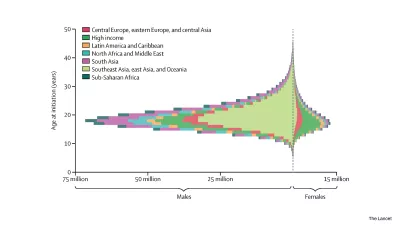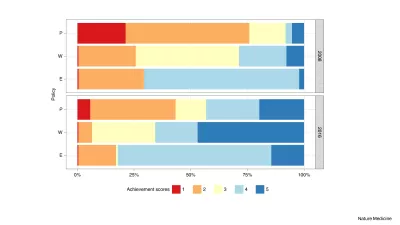Smoking and tobacco
While smoking prevalence has decreased over the past 30 years, the total number of smokers worldwide has continued to increase due to population growth, contributing significantly to disease burden.
Photo by Pablo La Rosa, Reuters.
Who is smoking around the world?
Our research shows that most people won’t start smoking after the age of 25.
Globally, 1 in 5 young men and 1 in 20 young women are smokers.
According to data published in The Lancet Public Health in 2021, 82.6% of current smokers began smoking between the ages of 14 and 25, with 18.5% smoking regularly before the age of 15.
By the time a non-smoker reaches the age of 25, the chances of them becoming a smoker are very low. For health interventions, understanding this window of opportunity in adolescence and early adulthood is critical to prevent increased smoking prevalence.

Is smoking increasing or decreasing worldwide?
Although smoking prevalence overall has decreased worldwide, only 81 countries saw a significant decrease among young people in the past 30 years, with over half of all countries seeing no change. Countries with increasing populations have not been able to maintain progress in reducing smoking prevalence.
- India, Egypt, and Indonesia saw the greatest absolute increases in the number of young male smokers.
- Turkey, Jordan, and Zambia saw the greatest absolute increases in the number of young female smokers.
What policies work to prevent smoking?
There are several evidence-based interventions for preventing smoking and reducing tobacco use.
The WHO Framework Convention on Tobacco Control outlines these interventions, called the MPOWER measures:
- Monitor tobacco use and prevention policies
- Protect people from tobacco smoke
- Offer help to quit tobacco use
- Warn about the dangers of tobacco
- Enforce bans on tobacco advertising, promotion and sponsorship
- Raise taxes on tobacco products

What health issue has the strongest evidence of being associated with smoking?
A 2022 Burden of Proof study analyzed the strength of the evidence for the relationship between people who are currently smoking and 36 health outcomes. For instance, we found very strong evidence of a significant harmful relationship between pack-years of current smoking and lung cancer.
One pack-year is smoking a pack (20 cigarettes) per day for a year.

What are other forms of tobacco use?
273.9 million people used chewing tobacco globally in 2019.
- The majority of those (228.2 million) who used chewing tobacco live in the South Asia region.
- In India alone, there are 185.8 million chewing tobacco users, representing 68% of all users globally.
- Bangladesh, Nepal and Bhutan also had very high prevalence of chewing tobacco use.
Tobacco use is a leading risk factor for death and disability worldwide.




